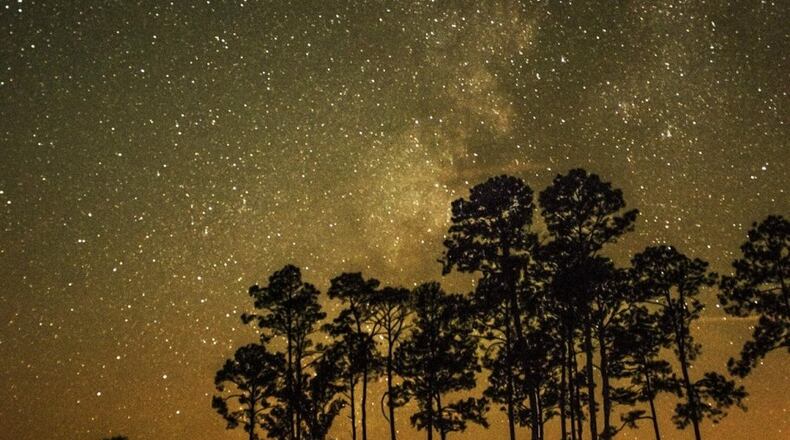Serious stargazers have long known the skies over Georgia’s Stephen C. Foster State Park in the Okefenokee Swamp are truly spectacular, but the International Dark Sky Association made it official. The IDA named the park a gold-tier International Dark Sky Park, the first in Georgia and the only gold-tier designee in the Southeast.
The designation means the park has little view-blocking pollution, allowing exceptional views of the moon, stars, planets and comets.
Here are a few ways to enjoy Georgia’s designated Dark Sky Park.
Perseid meteor shower: 8:45-9:45 p.m. Aug. 10, Stephen C. Foster State Park. 912-637-5274. Meet in the parking lot across from the trading post to view this spectacular display. You can also check out other celestial objects through a telescope during the viewing. View event details here.
Camping at Stephen C. Foster State Park: The park is about 277 miles from Atlanta, about a 4½ hour drive if you don’t run into traffic. Consider enjoying the Dark Sky Park overnight, staying at the park’s campground. It has more than 60 campsites, including primitive and full-service RV hookups. The state park also has cottages for rent that include bedrooms, televisions and kitchens with basic supplies. To check last minute availability, click here.
Swamper Heritage Day: 9:30 a.m. to 4 p.m. Oct. 26. 912-637-5274. Step back into the 19 century and visit the Okefenokee frontier. You’ll explore among authentic settler camps and experience life as it was in this remote wilderness. Demonstrations will include blacksmithing, pine needle basketry, spinning and weaving, musket firing, and other folklife exhibitions. $2 event admission, $5 parking. View event details here.
This remote park is a primary entrance to the Okefenokee Swamp, one of Georgia’s seven natural wonders. Come early and enjoy paddling, photography and abundant wildlife from alligators to heron and black bears on the 402,000-acre refuge.
About the Author
Keep Reading
The Latest
Featured



